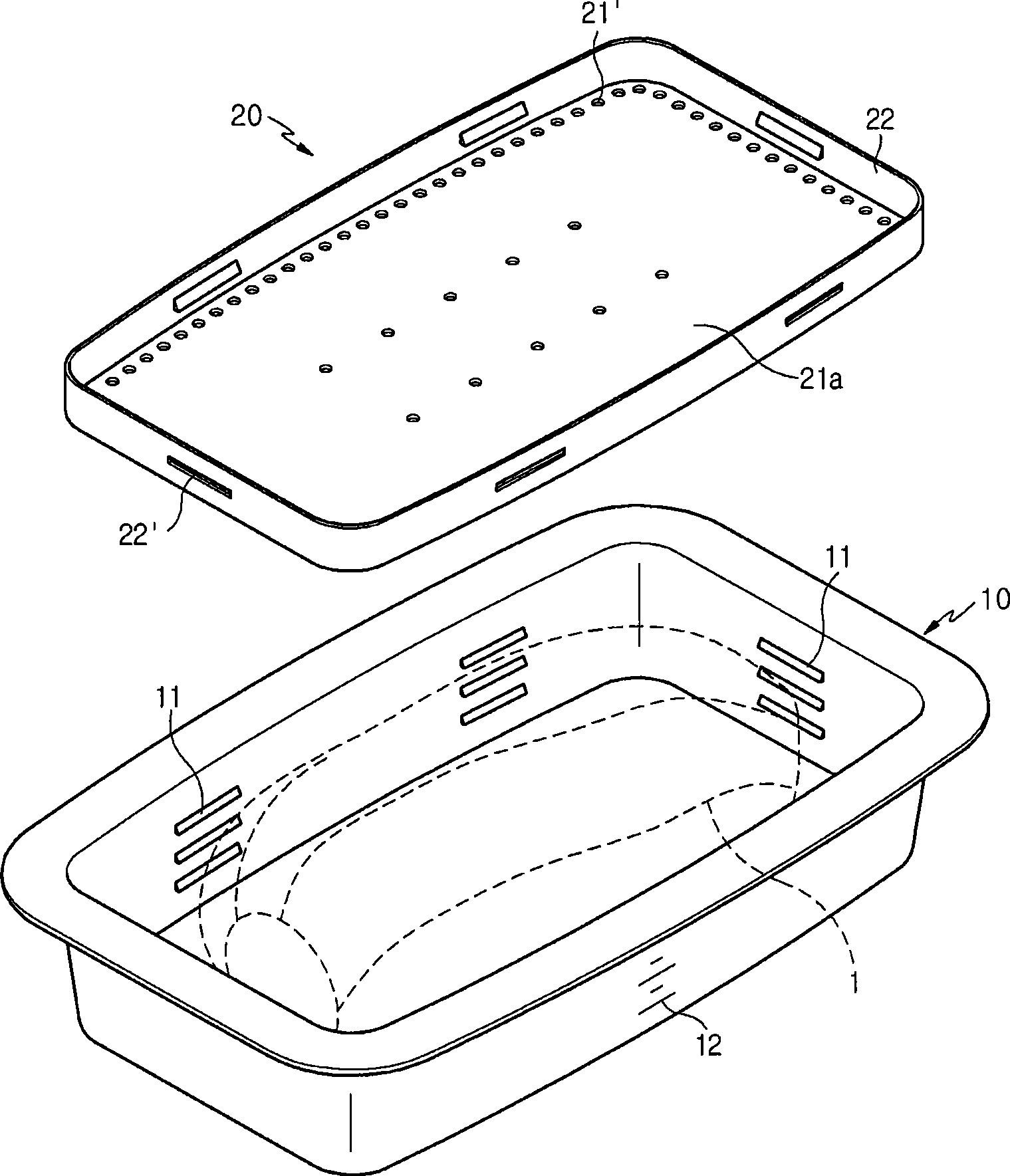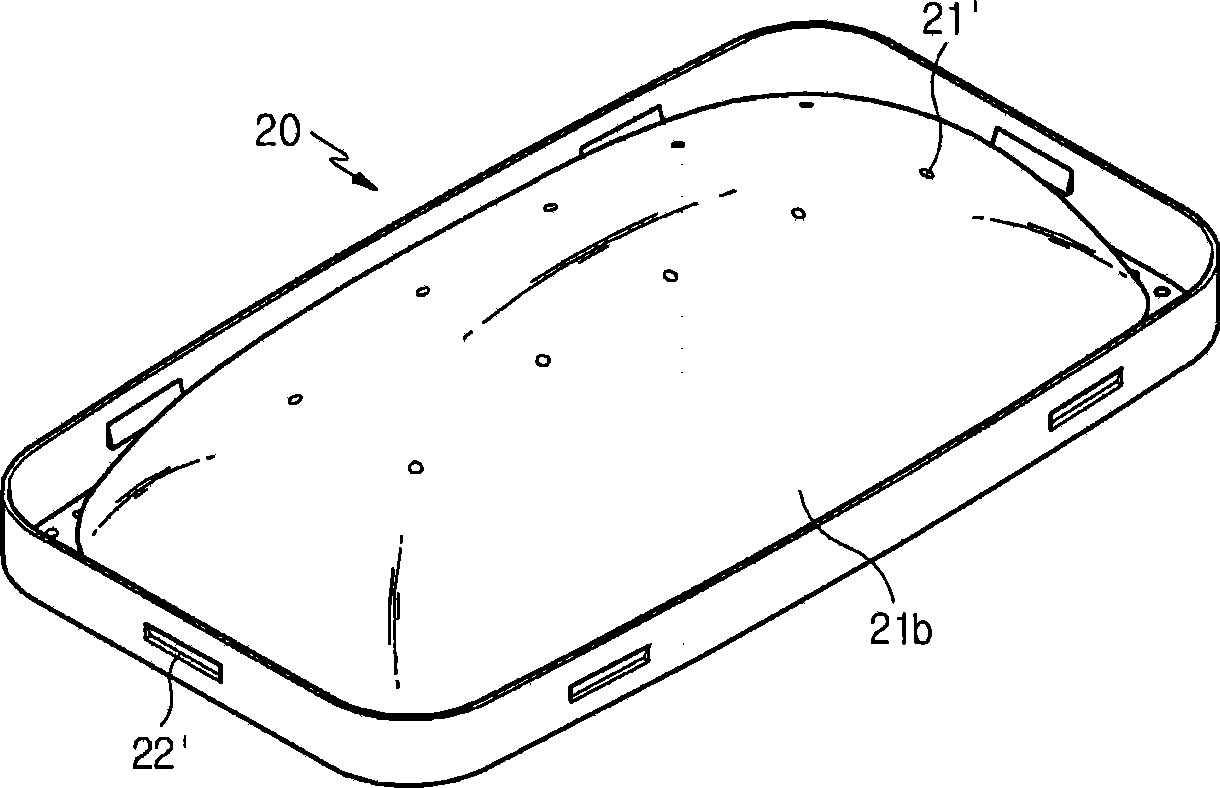Kimchi container having improved fermentation and ripening function, and kimchi ripening method using the same
A kimchi and container technology, which is applied to a kimchi container with improved fermentation and aging functions and the field of kimchi aging, can solve problems such as drying out and partial flavor deterioration of the kimchi.
- Summary
- Abstract
- Description
- Claims
- Application Information
AI Technical Summary
Problems solved by technology
Method used
Image
Examples
Embodiment 1
[0057] Embodiment 1: the mensuration of pickle pH value and acidity
[0058] During fermentation, the pH of kimchi decreases due to the production of organic acids other than lactic acid by lactic acid bacteria. Typically, the pH of kimchi drops from 5.8 to 3.8 after fermentation. The acidity of kimchi is not necessarily proportional to the pH, since the type of kimchi, salt concentration, and temperature can vary the solubility of the acid produced. After fermentation, the acidity rose from 0.03% to 1.1%.
[0059] In Example 1, the pH and acidity of the first and second test groups and the first and second control groups were measured during fermentation.
[0060] The pH of kimchi was directly measured by inserting the electrode of a pH meter (Istek model 740P) in the kimchi juice.
[0061] In order to measure the acidity of kimchi, take a predetermined amount of kimchi, add the same distilled water as the amount of kimchi to the taken kimchi, take a predetermined amount o...
Embodiment 2
[0067] Example 2: Kimchi CO 2 Determination of concentration
[0068] Kimchi fermentation mode and CO 2 production is closely related. Kimchi, CO 2 Is the element of fresh flavor, together with acidity as an important indicator of fermentation. Typically, during fermentation, in a kimchi container, within a certain temperature range of CO 2 The concentration continued to rise while the O 2 Concentration decreased. According to the type of kimchi, storage temperature and salt concentration, CO 2 production will vary. Gaseous CO 2 Dissolved in pickle juice for a mellow and fresh flavor.
[0069] In Example 2, the CO of the first and second test groups and the first and second control groups during fermentation were measured. 2 concentration.
[0070] In order to measure the CO of kimchi 2 Concentration, 2M sodium potassium tartrate solution and 2M sodium citrate solution were mixed at a ratio of 1:1 to form a tartrate-citrate solution, and then neutralized with 1N Na...
Embodiment 3
[0077] Example 3: Lactic acid bacteria count in Kimchi
[0078] The aging process of kimchi is a compound fermentation process determined by various factors, such as storage temperature, refined salt concentration, and main and auxiliary ingredients. The aging process also involves a variety of microorganisms.
[0079] Gram-negative bacteria and endospores Gram-positive bacteria appear in the early stage of fermentation, then die, and then start lactic acid fermentation. Kimchi in a state suitable for consumption after fermentation contains Gram-positive bacteria, Gram-negative bacteria, and Gram-positive bacteria belonging to yeast (such as Lactobacillus, Leuconostoc, Pediococcus sp., Enterococcus ( Enterococcus sp.) and Lactococcus sp.). Microorganisms are diverse in distribution and frequency of occurrence. Typical microorganisms are Leuconostoc mesenteroides, Leuconostocparamesenteroides, Streptococcus raffinolactis, Lactobacillus plantarum, and Lactobacillus sake . L...
PUM
 Login to View More
Login to View More Abstract
Description
Claims
Application Information
 Login to View More
Login to View More - R&D
- Intellectual Property
- Life Sciences
- Materials
- Tech Scout
- Unparalleled Data Quality
- Higher Quality Content
- 60% Fewer Hallucinations
Browse by: Latest US Patents, China's latest patents, Technical Efficacy Thesaurus, Application Domain, Technology Topic, Popular Technical Reports.
© 2025 PatSnap. All rights reserved.Legal|Privacy policy|Modern Slavery Act Transparency Statement|Sitemap|About US| Contact US: help@patsnap.com



